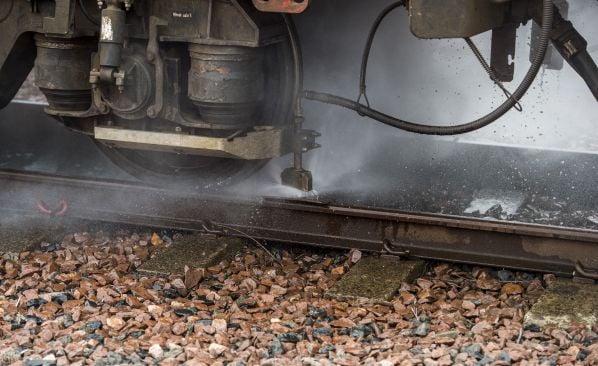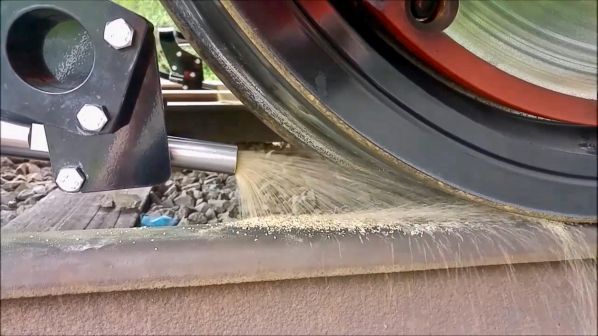During the braking experiments, targeted jets of sand will be sprayed directly in front of individual wheels before they pass over rails which have been made artificially slippery to mimic the situation when compacted wet leaves are stuck to the rails, as happens during each leaf fall season.
RSSB says this technique is a development of a similar method which already exists but the trials will target specific wheels when they start to slip, so that the sand can be applied as and when it is needed. The objective is to test whether this innovation will reduce the need to brake early or decrease a train’s speed.
“This new sanding technique halves train stopping distances during times of low adhesion and provides the biggest improvement in 20 years,” claims Ms Luisa Moisio, research and development programme director with RSSB.
“Leaves on the line is a big problem for the railway,” says Mr Martin Colmey, head of operations delivery for NR’s Central route. “It disrupts services and inconveniences passengers and every year.”
The trials will be conducted on each Sunday in October on the southern branch of Birmingham’s Cross-City Line between Barnt Green and Redditch.

NR introduces specials timetables on lines such as this which are prone to heavy leaf fall during the autumn to enable trains to travel more slowly, with longer stopping distances to prevent trains overshooting stations and signals, and with lower acceleration rates.

